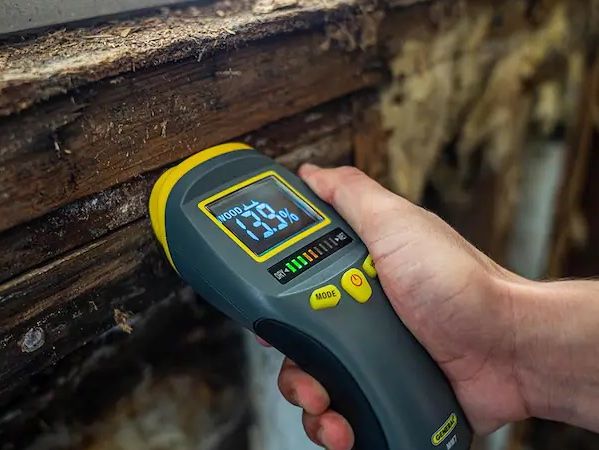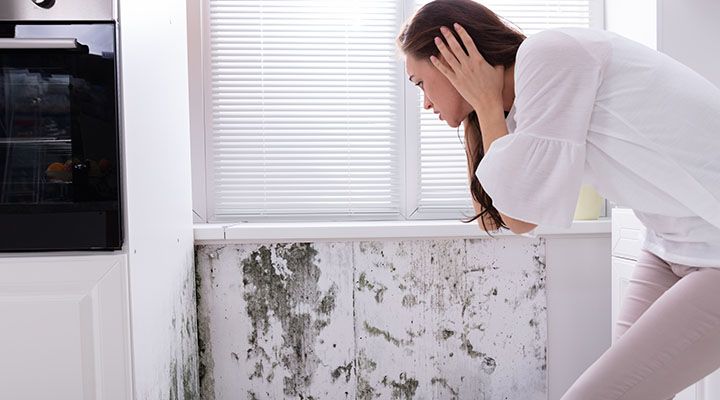If you're concerned about mold in your home, you're not alone. Mold can cause many health problems and is one of the most common home-related issues.
Luckily, there are ways to test for mold in your house so that you know what needs fixing before it gets worse. We'll show you how to test for mold in your home and what to do if you find it. Also, these tips will help if you're buying a new home in as-is condition and want to make sure it doesn't have a recurring mold problem.
For Starters: Detect the Mold
If you' If you are someone who wants to know how to test for mold in your home, keep reading!
You may not have known that many places in your home are full of moisture. The first and easiest way to test for mold is in your walls.
How you ask? The quickest way is to check it with a moisture meter. They're easy to use and you won't need any experience or know-how to operate one.

Here are some tips on how to detect mold with a detailed visual inspection if you don't have a moisture meter.
1. Inspect bathtub, shower and sink edges, caulk lines or flashing to find surface mold and to determine if any water intrusion is occuring.
2. Inspect window sills (inside and outside) for mold spots or mildew.
3. Inspect air conditioner ducts and vent covers for mold spots.
4. Check below the kitchen sink or inside bathroom vanities.
5. Inspect the attic, crawlspace or basement for visible mold.
6. Look behind all accessible surfaces where water might accumulate or where a drainage problem might exist.
7. Order an air quality test from a local professional.
8. Buy a mold testing kit online.
If you do end up discovering mold, the best way to remediate for mold is to hire a professional. They will have the proper equipment and expertise to mitigate any mold or air quality issues, especially if you're moving into an old house that may have stubborn mold issues.
Use Mold Kit To Detect Mold
A mold kit is a helpful tool for detecting mold in the house. Mold testing kits are available at most hardware stores and home improvement centers.
1. Choose the Right Mold Test Kit
There are many different mold test kits on the market. If you are testing for mold in your home, you will need a kit designed for home use. And if you are testing for mold in an industrial setting, you will need a kit designed for industrial use.
2. Follow The Instructions Carefully
Mold test kits come with instructions on how you should use them properly. It is essential to follow the instructions carefully to get accurate results.
3. Take the Sample
Now you need to take a sample of the area you are testing. You can swab the area with a cotton swab or press a small piece of tape against it for 30 seconds.
4. Send the Sample off to be Tested
After taking the sample, you need to send it to a laboratory for testing. They will return the test results to you within a few weeks.
5. Interpret the Results
The interpretation of your mold test is important because it will tell you whether or not there are molds in the air. The answer may also indicate what type, if any- -so make sure to pay attention!
Types of Household Mold
1. Stachybotrys chartarum
Black mold, or Stachybotrys chartarum, is a fungus that can grow in homes. This dark green or black fungus yields various health problems, including respiratory issues and allergies; it has been linked to asthma, among other things.
2. Aspergillus
Aspergillus mold spores can be found in homes and are linked to various health problems, including respiratory issues and allergies.
3. Cladosporium
Cladosporium is a type of mold that is commonly found in homes and can cause you numerous health problems, such as; skin irritation, allergies and respiratory problems.
4. Penicillium
If you find yourself with an itchy nose and sore throat, there's a good chance that Penicillium is to blame. This mold can be found in homes across North America - often without our knowledge!
5. Alternaria
This mold may be microscopic, but it is no joke! This fungus can cause anything from skin irritation and respiratory issues to allergies.
6. Chaetomium
Chaetomium mold in your home may not be a good sign for you and your family, as it causes several health issues, including breathing problems and allergies.
7. Fusarium
Fusarium species are one type of mold that can cause various human infections, including respiratory problems and skin irritation. These molds also contribute to allergies by producing allergens such as mycotoxins which irritate your immune system's cells.
Side Effects Of Mold On Your Health
Certain types of mold can cause several health problems when people are exposed to it - especially for long periods of time. Finding and preventing mold growth can ensure you don't face risks like these below:
● Mold exposure can cause respiratory problems
● Skin irritation
● Allergic reactions
● Asthma
● Pneumonia
Conclusion
If you think there may be mold in your home, it is important to test for it as soon as possible. Whichever technique you choose, perform testing to avoid further damage and potential health problems for you and your family. If you're shopping for a house and want to get ahead of the curve, we recommend a home inspection with an air quality test during your due diligence period.

